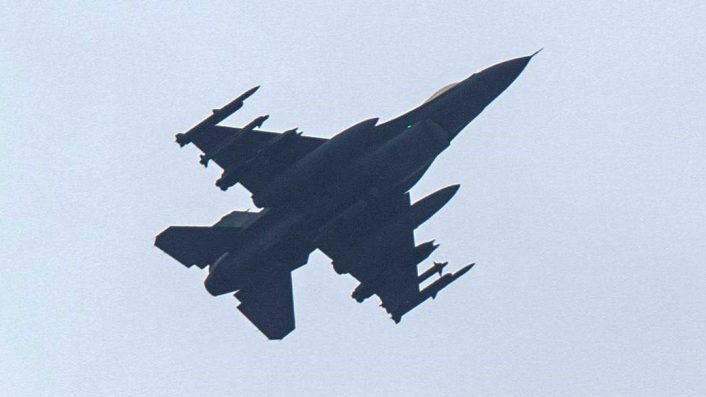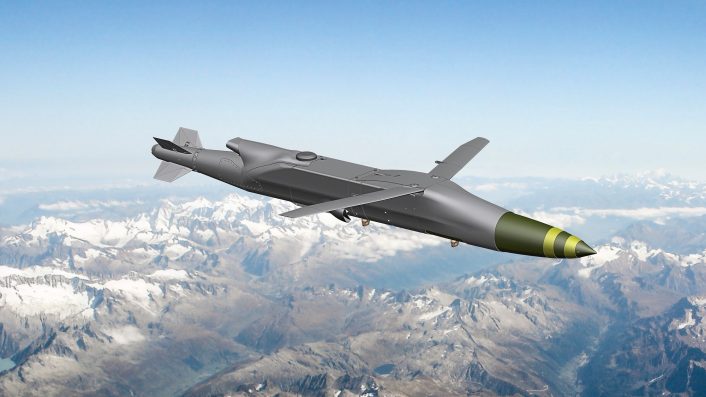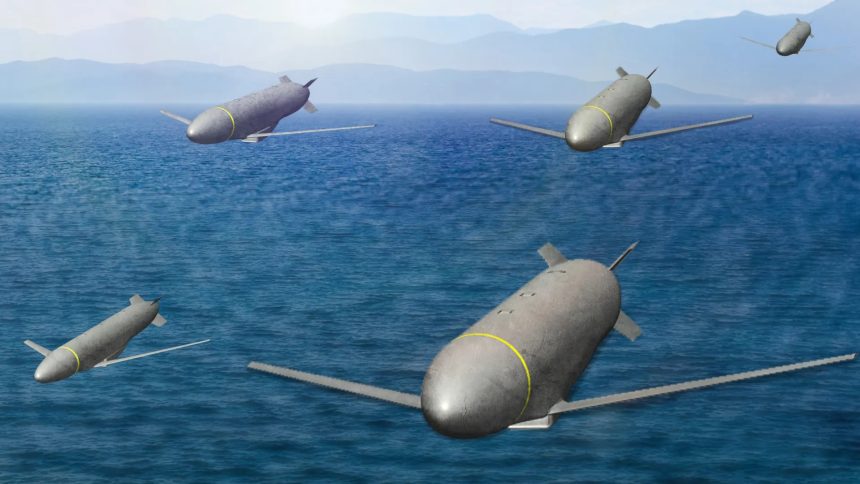The air-launched tactical, scalable, cheap air-to-ground weapon was sought by the U.S. Air Force last year for Ukraine.
The Trump administration approved last week 3,350 ERAM (Extended Range Attack Munitions) to be delivered to Ukraine, among other items, in a $850 million aid package “mostly funded by European nations,” due to arrive in the country in about “six weeks,” The Wall Street Journal reported in an exclusive story on Aug. 23, 2025. The development was reported in a story about the Pentagon prohibiting Ukraine from conducting long-range missile strikes inside Russia with the U.S.-made ATACMS (Army Tactical Missile System).
The air-launched tactical, scalable, cheap air-to-ground weapon was sought by the Air Force Life-Cycle Management Center (AFLCMC) last year for Ukraine, and it appears that things have moved reasonably fast with the first units finishing production. However, outside of concept drawings, we do not know what the weapon looks like in its final design form, or who are the arms manufacturers involved.
However, it can be safely assumed that the Ukrainian Air Force’s F-16s, Mirage 2000s and its fleet of Russian-origin MiG-29s, Su-25s and Su-27s would be able to operate it. This new weapon would be an addition to the AASM Hammer and GBU-39 SDB already employed by Ukrainian fighters.
The US is sending Ukraine 3,350 Extended Range Attack Munition (ERAM) air-launched missiles, with deliveries starting in weeks, per the WSJ.
The low-cost cruise missiles reportedly have a range of up to 250 miles, a CEP of less than 10 m, and a warhead of 500 pounds. pic.twitter.com/csMjVDFqV7
— OSINTtechnical (@Osinttechnical) August 23, 2025
WSJ report
The WSJ report comes amid the ongoing diplomacy effort between Moscow and Washington to settle the war, consistent with President Donald Trump’s long-standing desire to extricate the U.S. from that conflict. Images of the paywalled article, posted on X by deputy director of the Foundation for the Defense of Democracies (FDD) John Hardle, said the Pentagon has been vetoing long-range strikes using the ATACMS, which has a range of 300 km and is fired from the M142 HIMARS (High-Mobility Artillery Rocket System).
The Pentagon reportedly is blocking Ukrainian ATACMS & Storm Shadow missile strikes inside Russia, undercutting Trump’s own leverage vis-a-vis Moscow. The provision of ERAM is great but would be more impactful if Ukraine’s hands weren’t tied…https://t.co/36HRwr9lsr pic.twitter.com/KcclH8Mcvm
— John Hardie (@JohnH105) August 23, 2025
The “review mechanism” initiated by the Pentagon’s Undersecretary for Policy Elbridge Colby for Ukraine’s long-range fire requests for both American weapons and European ones that “rely on American intelligence and components” follows the White House’s efforts to “woo the Kremlin into beginning peace talks.” This approval process mentioned by an unspecified official to the publication is in direct contrast with Trump’s recent comments that Ukraine should “play offense.”
“It is very difficult, if not impossible, to win a war without attacking,” said Trump in a post on social media. “There is no chance of winning!”
Extended Range Attack Munition
As The Aviationist reported, the U.S. AFLCMC (Air Force Life-Cycle Management Center) sought the development of the ERAM in a RFI (Request for Information) and RFP (Request for Proposals) in January 2024 and July 2024, respectively. After reviewing proposals from 16 unidentified companies, the RFP sought full technical and financial proposals “to fund the initial phase of development of a new aviation munition called ERAM.”

The document added that the new munition “will be key to enhancing Ukraine’s capabilities and should be an affordable weapon type adapted for mass production.” The ERAM is expected to possess a commercial modular, open architecture and deliver “affordable long-range effects.”
The RFP did not elaborate on the requirements, however the RFI specified as minimum requirements a 500 lb (227 kg) class weapon, capable of blast, fragmentation and limited penetration effects and with variable fuze options. The RFI also stipulated a range of at least 463 km and a speed of at least Mach 0.6.
A specific capability is a navigation system capable of operating in a GPS degraded environment, with a CEP (Circular Error of Probability) within 10 m also in GPS degraded conditions. Lastly, the weapon should be mass producible to up to 1,000 units per year by 24 months after contract signing.
US approves sale of 3,350 ERAM missiles with a range of up to 450 km to Ukraine – WSJ
Delivery expected in six weeks.
Targets must be coordinated with the Pentagon.
The package costs $850 million, largely financed by European allies. pic.twitter.com/Cv8cMCq92L
— Jürgen Nauditt 🇩🇪🇺🇦 (@jurgen_nauditt) August 24, 2025
The need to be able to operate in SATNAV (Satellite Navigation)-denied environments came as many Western weapons faced diminishing success amid heavy Russian electronic warfare, with only the GBU-39 SDB recording some notable success.
Unidentified U.S. officials, who put the ERAM’s range between 150 miles (241 km) and 280 miles (450 km) in the WSJ report, added that Ukraine would have to seek Pentagon’s approval to use these too. While we would only know what the weapon looks like after official pictures emerge upon delivery to Ukraine, the rapid transition from the tender to the manufacturing stage suggests the weapon is a technically uncomplicated land strike munition.

Existing weapons
Existing weapons systems that broadly meet the ERAM’s requirements include Boeing’s Powered Joint Direct Attack Munition (PJDAM), which adds a fuselage and wing kit, a Kratos-TDI-J85 engine and guidance system to a 500 lb bomb, transforming it into a mini cruise missile. The PJDAM has an average unit cost between $25,000 and $30,000, much lower than the AGM-158 JASSM’s (Joint Air-to-Surface Standoff Munition) $1 million. Certain computerized illustrations originating from Ukraine also show the ERAM looking similar to the PJDAM.
Jet-Powered JDAM Aims To Turn Bombs Into Cruise Missiles
The company is pitching the Powered Joint Direct Attack Munition (PJDAM) as a flexible and lower-cost cruise missile that can be used to attack targets on land and ones at sea. It could help countries, including the United… pic.twitter.com/0UxcWNGMcT
— Havoc (@Havoc_Six) October 25, 2023
Another munition is the Gray Wolf program that the Pentagon signed separately with Lockheed Martin and Northrop Grumman in December 2017. The experimental low-cost cruise missile can be deployed as a swarm to operate against IAD (Integrated Air Defense) networks.
A third candidate is the U.S. Navy’s MACE (Multi-mission Affordable Capacity Effector) sought in February 2024. The cost-effective, air-launched, extended-range, anti-ship weapon should have “increased range at lower costs” and integrate a “high-maturity propulsion system with proven payloads.”

The procurement of the new weapon for Ukraine might also inform the U.S.’ own effort in Project Artemis to have such weapons that blur the lines between one-way attack drones and cruise missiles to bring mass in the opening stages of a conventional war. Two of the four firms that have received contracts from the Defense Innovation Unit (DIU) are Ukrainian companies, with the two U.S. companies being Dragoon and Aerovironment.
How the new ERAM shapes this program, whether U.S. and European allies acquire an advanced variant, or test components – possibly guidance, navigation or seeker technology – remains to be seen.









